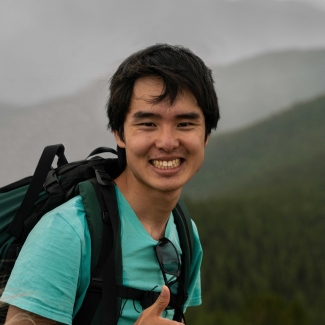Senoo
Although “Aruku” means “walking” in Japanese, Aruku keeps running to pursue further understanding and harnessing the quantum mechanical world. In this way, he found his passion for Atomic, Molecular, and Optical Physics (AMO) in the Takahashi laboratory at Kyoto University, Japan, where he accumulated AMO and laser experiences. While he visited the University of Washington as an exchange student, he developed a ULE cavity system for the Ytterbium clock transition laser in the Gupta group. After coming back to Kyoto in 2020, he did theoretical research relating to cold atoms. Then, for his senior research, he joined the Ytterbium Quantum Gas Microscope (QGM) group in the Takahashi lab, where he observed site-resolved images of atoms and developed a DMD system for the QGM. For his Ph.D. research in the Kaufman lab, he is excited to pursue the possibility of the Ytterbium tweezer array for the applications of Quantum information and metrology



 The Physics Frontiers Centers (PFC) program supports university-based centers and institutes where the collective efforts of a larger group of individuals can enable transformational advances in the most promising research areas. The program is designed to foster major breakthroughs at the intellectual frontiers of physics by providing needed resources such as combinations of talents, skills, disciplines, and/or specialized infrastructure, not usually available to individual investigators or small groups, in an environment in which the collective efforts of the larger group can be shown to be seminal to promoting significant progress in the science and the education of students. PFCs also include creative, substantive activities aimed at enhancing education, broadening participation of traditionally underrepresented groups, and outreach to the scientific community and general public.
The Physics Frontiers Centers (PFC) program supports university-based centers and institutes where the collective efforts of a larger group of individuals can enable transformational advances in the most promising research areas. The program is designed to foster major breakthroughs at the intellectual frontiers of physics by providing needed resources such as combinations of talents, skills, disciplines, and/or specialized infrastructure, not usually available to individual investigators or small groups, in an environment in which the collective efforts of the larger group can be shown to be seminal to promoting significant progress in the science and the education of students. PFCs also include creative, substantive activities aimed at enhancing education, broadening participation of traditionally underrepresented groups, and outreach to the scientific community and general public.